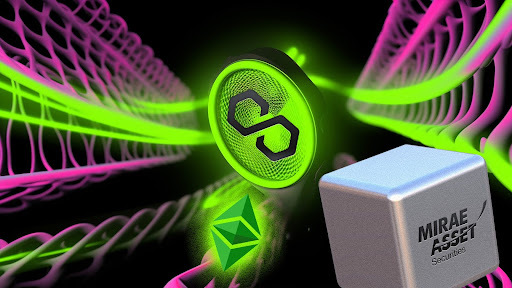
Efforts to achieve a decentralized network in various human sectors can be traced to the early 1980s. Although we only just got a breakthrough in 2008, blockchains are looking to be the discovery we've all been waiting for. Speedy transactions, worldwide coverage, even while we get to stay anonymous? It's like a dream come true, and cryptocurrency has only served to advance blockchain technology.
But before we delve into the juicy parts, what's a blockchain?
Blockchains are distributed databases that store information in various forms. They link several nodes in a computer network together, allowing users with internet connectivity to access blockchain operations all over the world. Because there is no central authority, every blockchain is decentralized, and that's why they are well suited to the cryptocurrency sector.
Hang tight for more on blockchains, their applications, and how they operate.
History of Blockchains
David Chaum proposed the idea of blockchain-like protocols in 1982 in his dissertation titled 'Computer networks established, maintained, and Trusted by Mutually Suspicious Groups.' By 1991, Stuart Haber and Scott Stornetta continued research on the topic, and together with Dave Bayer, they introduced Merkel's tree designs into blockchain technology as a form of incorporating several entries into one block.
Fast forward to 2008, when Satoshi Nakamoto created the first modern blockchain, introducing the hash card form of time stamping and launching the first cryptocurrency token, Bitcoin, as a native currency. Since Bitcoin's launch in 2009, blockchains have undergone significant technological changes–from the introduction of the proof of stake protocols to smart contract integrations–blockchains are getting better by the year.
Types of Blockchains
Most of the commonly known blockchains in cryptocurrency are public blockchains, allowing multiple users to access the platforms at any time and from anywhere around the world. But there are other types of blockchains, and they are used in different sectors to perform specific functions.
-
Public Blockchains
Public blockchains are those blockchains where anyone can join in. They are the typical chains in cryptocurrency, on which tokens are built. In other words, public blockchains are permissionless, allowing any user with an internet connection to join as a node.
The permissionless nature allows users to store transaction data across the distributed network. This is the principle of DeFi as we have it today, and it offers a more secure and transparent means of storing information than conventional centralized platforms.
Because anyone can join a public blockchain as a node, the chain requires a verification system, often referred to as a protocol, through which the nodes can authenticate data and information that is to be stored on the blockchain. The most common consensus mechanisms in use now are proof of work and proof of stake protocols, although the proof of work protocols are becoming outdated as they require large amounts of energy to maintain and produce blocks.
-
Private Blockchains
Private blockchains differ from public blockchains in that each node gets verified before they join the network. They are not open source, so the verification comes at the point of entry. However, their security is less developed–compared with public blockchains–as they contain a smaller number of nodes.
As a result, private blockchains are often on a smaller scale than public blockchains and are better suited for companies or organizations that require a small network for their staff. The speed of such blockchains is also higher than the conventional public blockchains since the network is less likely to get congested.
-
Hybrid blockchains
Private and public blockchains seem like two extremes; sometimes, a blend of the two is what suits some companies best. So there's the hybrid blockchain network, where there's a private blockchain for storing confidential information that is restricted to the staff and a public blockchain where other users can access information.
It is best applied in real estate and healthcare companies, where they can store company-specific data on the private blockchain and store information like ads on the public blockchain for other users to access. It gives the required security for company information while allowing the general public to access certain information like ads, promos, and listings.
-
Consortium Blockchains
These blockchains are similar to hybrid blockchains in that they have both private and public networks. The difference here is that consortium blockchains are best for a group of companies that need to come together to access similar information.
For example, several banks can come together to form a blockchain where each bank maintains their private network and interacts with the other banks on the public blockchain. Consortium blockchains are also referred to as federated blockchains.
How Do Blockchains Work?
The blockchain technology was refined by Satoshi Nakamoto to involve hash card generation, which keeps each block connected to another. This system keeps the blockchain safe from being altered by hackers.
Once a user initiates a transaction, the transaction logs with other transactions in a pool called the mempool. Miners/validators that are online pick up the transactions and drop them in a transaction block till it is full. The entire block gets encrypted using a special algorithm, and the mining process begins.
Mining involves each miner trying to guess the hash code on the block to complete the mining. The individual miners generate a hash code that is greater than the block's hash card to win the race. The miner with the most hash at the end of the ten-minute block mining period gets the mining reward.
Already, that looks like a lot, and that's why Bitcoin and other proof-of-work platforms require so much energy to compute and execute transactions. For proof of stake protocols, the network selects a validator node at random to process the transaction block generated. This saves time and energy, and the validator gets staking rewards which they share with the number of users that stake their tokens under them.
Pros and Cons of the Blockchain Technology
Blockchains promote decentralization, ensuring that information is stored across a distributed database, usually a ledger, to give it more security while ensuring that it can be accessed and verified at any time. The merits blockchain technology offers have facilitated its global adoption, some of them include:
-
Immutability means that information stored on blockchains cannot be altered.
-
Anonymity ensures that users can transact on the blockchain without disclosing their identity to the public.
-
Transparency, which keeps the blockchain open to verification and audit by regulatory or government bodies, especially in cases of investigation.
-
Speed and efficiency, except for specific proof of work blockchains where the traffic is intense.
-
Accurate transactions, especially since human intermediaries have been removed since the evolution of smart contracts.
The major demerit of blockchains is that they are all still based on human-written codes, so a problem in the code will translate to large-scale issues on the blockchain. Also, illegal transactions can occur via blockchains since the technology offers anonymous, secure, and immutable transactions.
Conclusion
All in all, blockchains are a work in progress, even as they permeate every global sector. Blockchain technology is advancing very quickly, thanks to cryptocurrency, and the next few years will feature even more adoption of the technology across the world.
Want More Cutting-Edge Educational Content?
Follow Us: X TikTok Instagram Telegram LinkedIn
Sign up to our newsletter at the bottom of the page
Check Out Our Top 10 Crypto Currencies of 2023
If you're new to the crypto space, seek financial advice from a professional and don’t invest what you cannot afford to lose. This article is for educational purposes and is not financial advice.


















